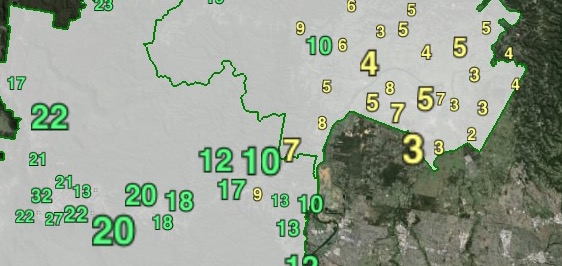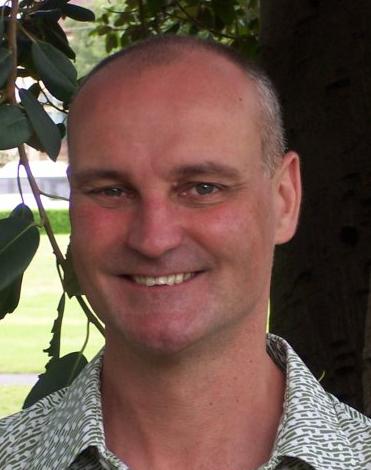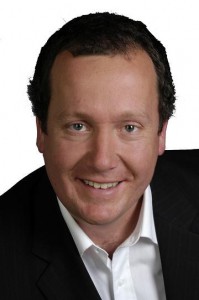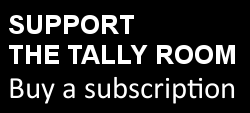The entirely forgotten former Labor senator John Black has published a very strange and stupid piece of electoral analysis in yesterday’s Australian, basically arguing that Greens voters are richer than Liberals, therefore they won’t support the mining tax because it will hurt their share portfolios. This will apparently cost the ALP the election because every single new Greens voter came from the ALP, but they will be preferencing the Liberals en masse because of the ALP’s tax on mining.
It’s difficult to decide which part of Black’s stupidity is the worst. When you get past the snide insulting of Greens voters (I don’t know what evidence he has that Greens voters don’t study maths or economics – my experience certainly doesn’t indicate that).
Black seems to base his entire thesis on the idea that Greens voters are the wealthiest group of Australians. It’s true that the core Greens constituency consists of middle-class Australians who generally are doing relatively well, although it also includes plenty of young people and students who have low incomes.
Before trying to compare political parties, you have to recognise that major parties are made up of a number of constituencies each larger than the Greens. Labor voters include working class voters with lower educations and inner-city progressives with degrees (who are very similar demographically to a lot of Greens voters). The Coalition draws support from wealthy, highly-educated voters as well as working class voters in the fringes of the big cities and Nationals voters in rural areas without much of an education. If you average those out, the Greens may come out with the highest average (although I doubt it). It’s far too simple to say “rich people vote Green”, and is obviously absurd.
There is a variety of reasons why Greens voters are seen as relatively wealthy. Greens voters tend to be young, so they don’t tend to include as many retired voters with depressed incomes (in contrast to the Coalition). Female Greens voters would be much more likely to be employed, which also would increase incomes. Indeed, I have seen evidence that, amongst highly-educated people, Greens voters tend to be less wealthy. Greens voters are wealthier mainly because they have higher education levels.
Black argues that the Greens are serving in a similar role as the Democratic Labor Party played in the 1950s and 1960s, when it directed the preferences of Catholics away from Labor and to the Liberals. It’s a really strange comparison. First of all, the DLP actively worked to prevent the ALP from forming government, directing preferences to Liberal candidates and helping the Liberals stay in power continually for 23 years. In contrast, the Greens very rarely preference the Coalition and their preferences were central to the election of the Rudd government in 2007.
The political base of the two parties is also extremely different. The DLP’s positioning on the right wing of the ALP as opponents too communists and the ALP’s left meant that they sat in the centre of the political spectrum. The Greens instead sit to the left of the ALP. It seems very strange to think that the Greens could act as a bridge to ease the transition of voters from Labor to Liberal.
Black’s thesis appears to be based on the assumption that Greens voters are motivated by their self-interest, and they see the health of mining profits to be in their self-interest. This seems like a very courageous assumption. Greens voters are clearly strongly motivated by environmental issues and social justice. While Greens voters are usually middle-class, the party has built a base through campaigning for public health and education in preference to private alternatives and campaigning for strong action on climate change.
Indeed, the Greens have been fiercely critical of the mining industry and advocated for the gradual shutdown of the coal industry. Black figures that rich Greens voters are worried about their share portfolio and superannuation if the federal government imposes a tax on the mining industry, despite Greens voters strongly supporting action on climate change which would hit the resource extraction industry hardest.
There is no evidence at all that Greens voters oppose the RSPT. Bob Brown today has criticised the government’s policy for subsidising mining, and that position seems to be in line with where Greens voters would stand. So is there any evidence at all that Greens voters are being pushed away from preferencing Labor because of Rudd’s policies on mining taxes? I can’t find any. It is probably reasonable to assume that most new Greens voters are coming from the ALP, but it is also reasonable to assume that most of those voters will return to Labor in preferences, despite their gross disillusionment with the Rudd government.
If Labor is to lose power in 2010, it will be due to voters in the centre switching to the Liberals, it won’t be due to left-wing voters deciding to preference Tony Abbott because Kevin Rudd is too hard on the mining industry!
 As a further taste of the seat guides being posted now on the Tally Room (53 and counting), I thought I’d run through another three interesting seats. Today these three seats are all seats with above-average Greens votes, but also with a wide variation in the Greens vote across the seat.
As a further taste of the seat guides being posted now on the Tally Room (53 and counting), I thought I’d run through another three interesting seats. Today these three seats are all seats with above-average Greens votes, but also with a wide variation in the Greens vote across the seat.

